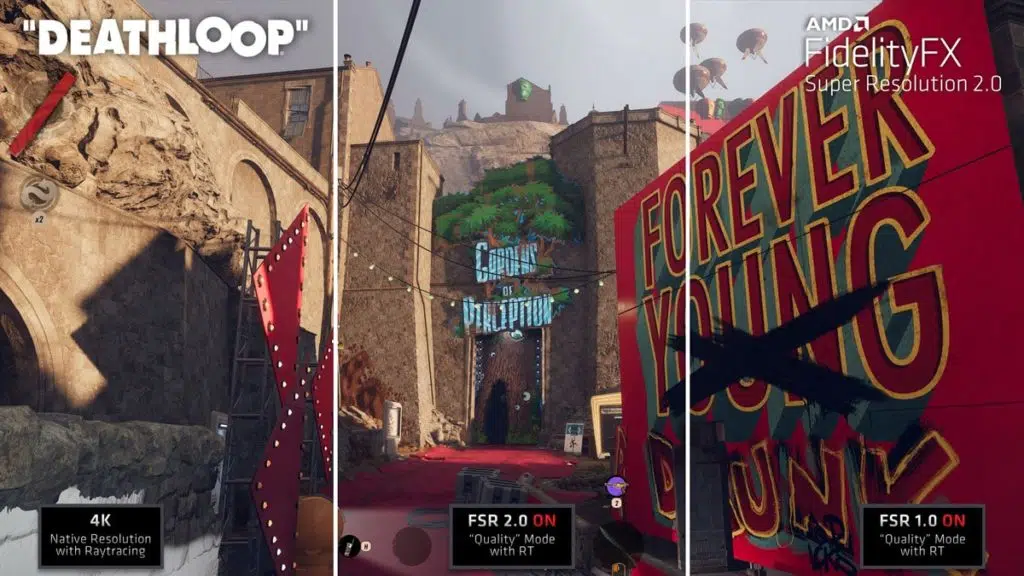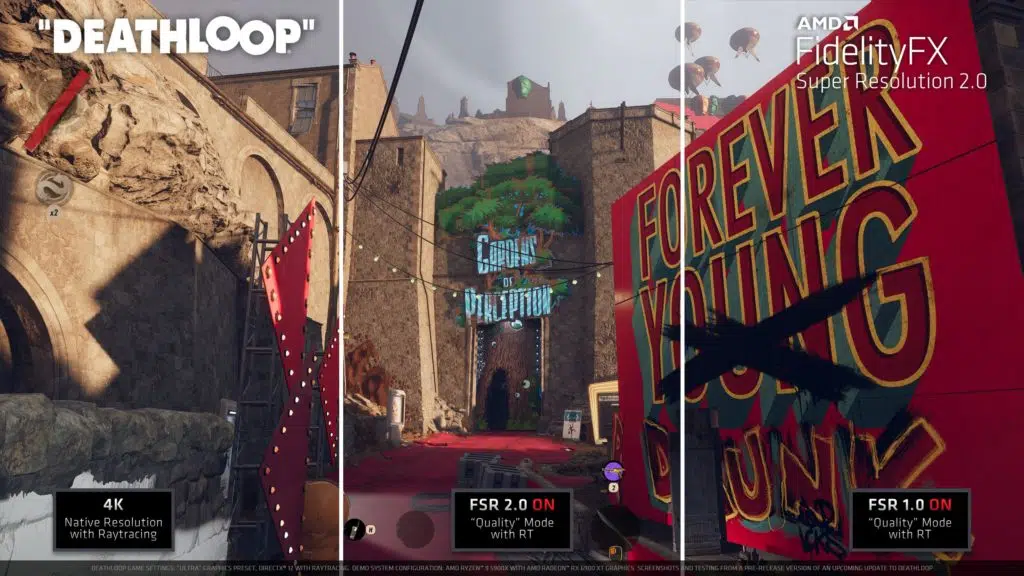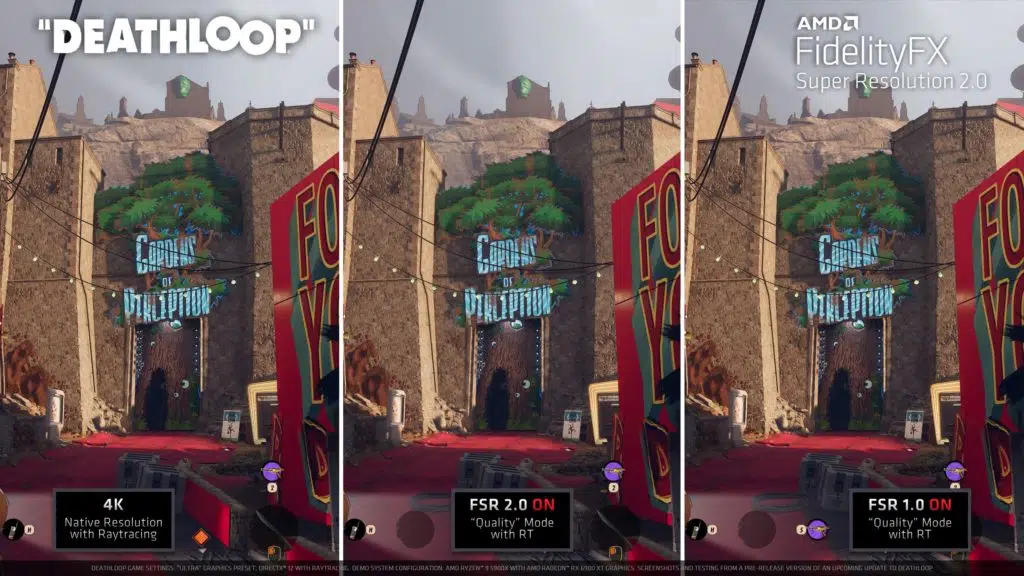
AMD officially announced FidelityFX Super Resolution (FSR) 2.0 today, and of course, the first question that everyone is asking is: how much better does it actually look than the original version? Pretty good, it seems, based on a video made in collaboration with Arkane Studios that shows the developer’s latest FPS, Deathloop, running with the new temporal upscaling technology enabled. AMD has already been bold enough to claim that FSR 2.0 provides “similar or better than native image quality at all resolutions,” but readers can decide for themselves whether that’s a stretch or not using the footage and comparison shots below. AMD FSR 2.0 is scheduled for release in Q2 2022, and Deathloop, obviously, will be one of the first games to take advantage of the feature. The current version of Deathloop already supports AMD FSR and NVIDIA DLSS.
Announcing and First Look at AMD FidelityFX Super Resolution 2.0 (AMD)
- AMD FidelityFX Super Resolution 2.0 technology is a temporal upscaling solution with incredible image quality that is the result of many years of research into upscaling technologies. It has been built by AMD from the ground up to deliver similar or better than native image quality and help boost framerates in supported games.
- FSR 2.0 temporal upscaling uses frame color, depth, and motion vectors in the rendering pipeline and leverages information from past frames to create very high-quality upscaled output and it also includes optimized high-quality anti-aliasing. Spatial upscaling solutions like FSR 1.0 use data from the current frame to create the upscaled output and rely on the separate anti-aliasing incorporated into a game’s rendering pipeline. Because of these differences, FidelityFX Super Resolution 2.0 delivers significantly higher image quality than FSR 1.0 at all quality mode presets and screen resolutions.
- Like FSR 1.0, FSR 2.0 does not use Machine Learning (ML) in its upscaling algorithm. While ML is one vehicle to solve a number of problems, it is not a requirement to achieve good quality upscaling. Therefore, FSR 2.0 does not require dedicated ML hardware which means more gamers can benefit from it. FSR 2.0 will work across a wide range of products and platforms, and like FSR 1.0, that includes select competitor graphics cards.




